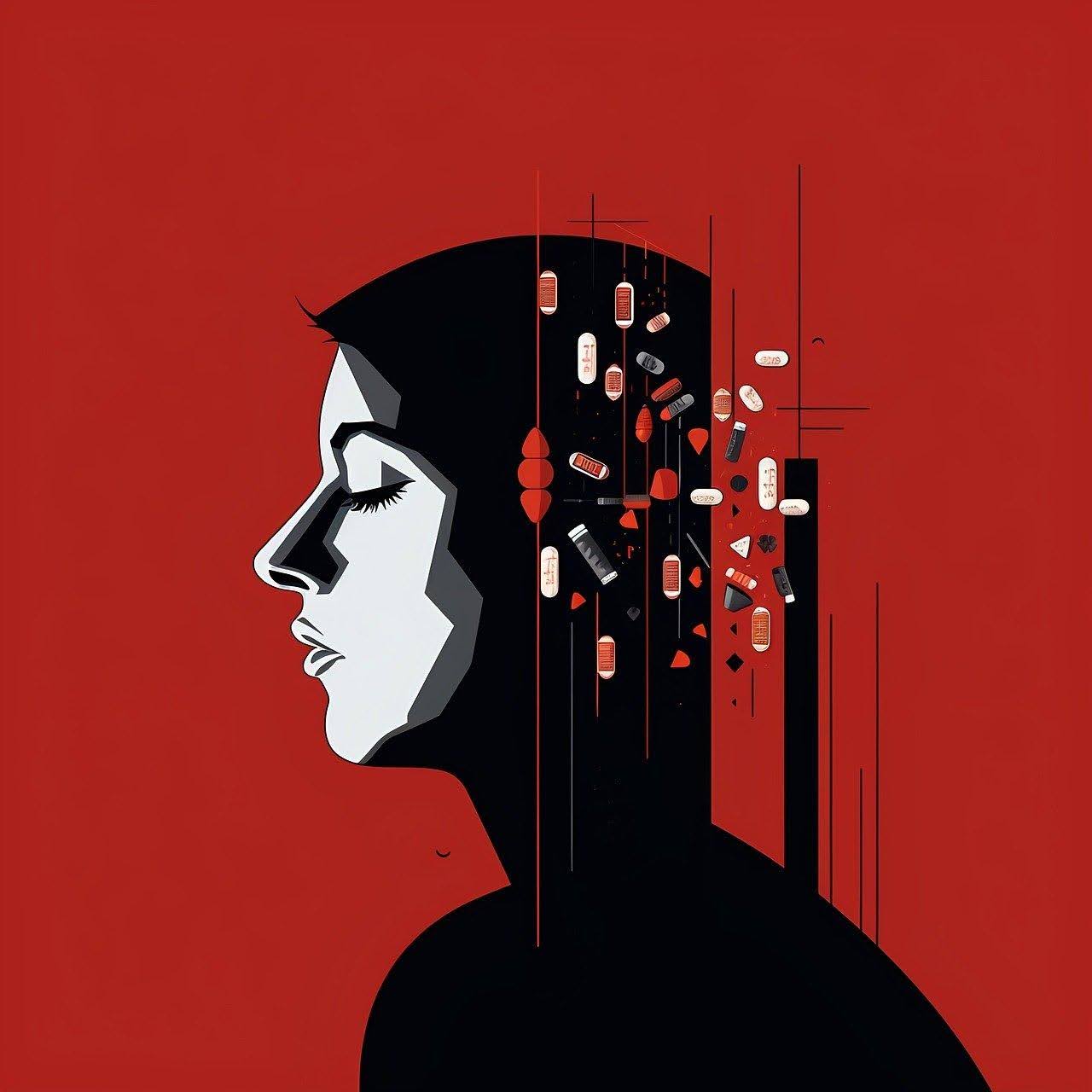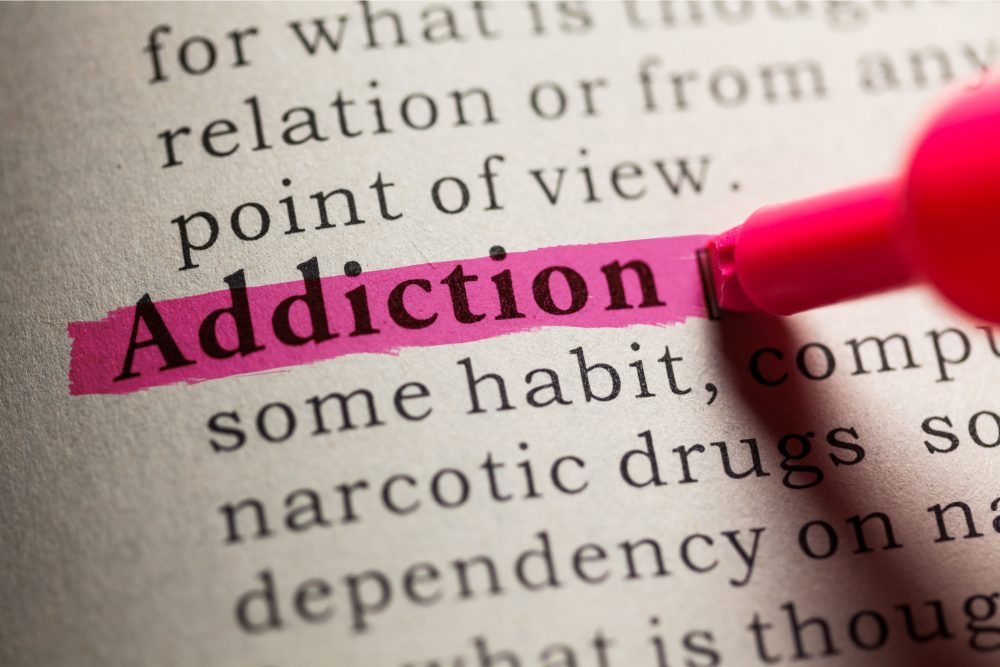Teen drug addiction is a significant and increasingly common issue that affects many adolescents around the world. According to the National Center for Drug Abuse Statistics, nearly half (46.6%) of teens will have tried illicit drugs by the time they reach 12th grade. What starts as experimentation can quickly lead to dependency, with serious physical, emotional, and social consequences. Teens are especially vulnerable due to peer pressure, stress, mental health issues, and the desire to fit in. Early drug use can disrupt their development, harm academic and social life, and have lasting effects. Explore with Wellbrook Recovery, addiction rehab specialists, how to recognize the signs of drug use in teens, which is crucial in addressing and preventing this problem.
Recognizing the Early Signs of Drug Use in Teens
Teenagers are naturally prone to mood swings and heightened emotions due to hormonal changes and the pressures of growing up. It’s important to remember that occasional irritability, changes in behavior, or mood shifts can be a normal part of adolescence, so they are not necessarily signs of teenage drug addiction.
One of the best ways to spot early signs of drug use in teens is by staying connected to your teen’s hobbies, interests, and daily habits. When you’re actively involved in their life, you’ll have a better sense of what’s typical for them and more easily recognize when something seems off.
Signs a Teenager is Using Drugs
Many behavioral and physical signs may indicate a teenager is using drugs. Let’s explore the most common signs.
Behavioral Signs:
Several unusual behaviors may be signs of substance abuse in adolescence, for instance:
- Dropping friends: Withdrawal from social circles and previously close friendships.
- More sleep than usual: Excessive sleeping or sudden changes in sleep patterns.
- Losing interest in hobbies: A decline in activities they once enjoyed.
- Loss of interest in family: Withdrawal from family activities or interactions.
- Rule breaking: Increased disregard for household rules, school policies, or curfew.
- Secretive behavior: Keeping things hidden and avoiding open communication.
- Defensiveness: Becoming overly defensive when questioned or confronted.
- Lying: Frequently telling lies or being deceptive about their activities.
- Stealing money: Taking money or valuables without permission.
- Loss of valuables:: Missing personal items, like jewelry or electronics.
- Prescription pills or bottles disappearing: Missing medications or pill bottles.
- Depression: Signs of sadness, irritability, or lack of energy.
Physical Signs:
Physical changes can be signs of drug abuse in a teenager, including:
- Weight loss: Unexplained weight changes or loss.
- Nosebleeds: Frequent nosebleeds, especially if using substances like cocaine.
- Watery or bloody eyes: Red, watery, or bloodshot eyes.
- Shakes and tremors: Unexplained shaking or trembling hands.
Signs at Home:
Sometimes, parents or caregivers may notice changes at home which can be signs of substance abuse in teens. Common signs are:
- Unusual paraphernalia found at home: Discovery of items like pipes, rolling papers, or unusual containers.
- Unusual scents or residue: Some substances leave a distinct smell or powder residue.
Detailed Physical Signs of Drug Abuse in Teenagers

Below are some more specific physical indicators of drug use in teens:
- Mood changes: Noticeable mood swings, from intense irritability to sudden bursts of euphoria, are often caused by the impact of drugs on the brain’s chemical balance.
- Paranoia: A teen may exhibit suspicious or irrational thoughts, becoming excessively worried about others or things around them, a common side effect of certain substances like stimulants or hallucinogens.
- Poor hygiene: Neglecting personal grooming habits or a sudden decline in cleanliness can signal that a teen is struggling with addiction, as drugs can decrease motivation and self-care.
- Bloodshot or glazed eyes: Substances like marijuana, alcohol, or opioids can cause blood vessels in the eyes to expand, resulting in red or glassy eyes. This is one of the most frequent indicators of drug abuse or alcohol misuse in teenagers.
- Hard to stay focused: Difficulty concentrating or staying focused on tasks, whether in school or conversations, is often a sign of impaired cognitive function due to drug use.
- Larger or smaller pupils than usual: Drug use can cause significant changes in pupil size — either dilated (larger) or constricted (smaller) — depending on the substance. Stimulants typically cause dilated pupils, while opioids cause constricted pupils.
- Mouth sores: Frequent mouth sores or unusual cuts inside the mouth could be a sign of smoking, using drugs like methamphetamine, or the result of drug-induced dry mouth, which can cause tissue damage.
- Headaches: Regular or unexplained headaches may occur due to dehydration, drug withdrawal, or the physical toll that certain substances take on the body, such as alcohol or stimulants.
- Rapid weight gain/loss: Significant changes in weight, either through excessive weight loss (common with stimulants) or rapid weight gain (linked to substances like alcohol or marijuana), can be a sign of addiction in teens.
- Extreme fatigue or hyperactivity: A teen may oscillate between extreme fatigue and high-energy states, depending on the drug used. Drugs like opioids or alcohol may lead to exhaustion, while stimulants can cause excessive energy and restlessness.
- Track marks on arms or legs: Visible needle marks, often found on the arms or legs, are a clear indicator of intravenous drug use. These marks can appear as small bruises, scabs, or sores from repeated injections.
Signs a Teenager is Using Drugs at School
Teen’s drug use can often become evident in their behavior and performance at school. School is a key environment where changes in a teen’s habits or attitude can be more noticeable. If you’re concerned that your teen may be using drugs, here are some warning signs that might appear in a school setting:
- Truant (Skipping School): One of the most telling signs of drug use can be increased absenteeism. Teens who begin using drugs may skip school more frequently to avoid getting caught or to hide their behavior. Truant teens may try to find ways to cover up their absence or lie about the reasons they’re missing school. Chronic truancy is often a red flag that something more is going on.
- Defying Authority: A teen who is experimenting with or using drugs may begin to challenge teachers, administrators, and other authority figures at school. This could manifest as more frequent rule-breaking, arguing with teachers, or defiance in the classroom. They may become more confrontational, less compliant with school expectations, or even act out to cover up their drug use.
- Teen Not Informing Parents of School Events: Teens who are involved in drug use may start withdrawing from family activities, including not informing their parents about school events, activities, or assignments. This might seem like a simple sign of teenage rebellion, but when combined with other behaviors, it could indicate that the teen is avoiding these events to keep their drug use a secret.
- Declining Grades: Drug use can impair cognitive function, making it harder to concentrate and retain information. As a result, grades may start to decline significantly. Teens may also lose interest in classwork, no longer completing assignments, or showing up to school unprepared. If a previously good student begins to show a drop in academic performance, it may be a sign of underlying issues, including drug abuse.
- Loss of Interest in Schoolwork: A lack of interest in school activities, assignments, and even long-term goals may be an indication of drug use. Drugs can reduce motivation and focus, which could lead a teen to stop caring about school altogether. The teen may stop participating in class or fail to meet the academic expectations they once maintained.
- Sleeping During Class: Excessive sleepiness or nodding off during class can be a common symptom of drug abuse. Many substances, such as marijuana or opioids, cause drowsiness and can lead a teen to fall asleep during the school day.
- Reduced Attention Span: Drug use, especially with substances like marijuana, cocaine, or alcohol, can impair cognitive abilities and focus. Teens may show a significant drop in their ability to stay focused on lessons, assignments, or conversations. They may appear distracted, daydreaming, or unable to follow through with tasks, even those that they once found engaging.
Risk Factors for Drug Abuse in Adolescence
Teen drug abuse is a complex issue that can be influenced by multiple factors. Understanding the risk factors for drug abuse in adolescence can help parents, caregivers, and educators identify potential problems early and take action. Below are the five main risk factors that contribute to teen drug abuse:
1. Family History
A family history of drug abuse or addiction can significantly increase a teen’s risk of developing substance use problems. Genetics play a role in how an individual’s brain responds to substances, meaning a teen with a parent or relative who has struggled with addiction may have a heightened susceptibility to developing similar habits. Teens with parents who abuse drugs may be more likely to experiment with substances themselves, either due to genetic predisposition or as a response to dysfunctional family relationships.
2. Age of First Use
Research shows that the earlier a teen starts using substances, the more likely they are to continue using them and develop a substance use disorder later in life. The adolescent brain is still developing, and early drug use can interfere with cognitive, emotional, and social development. Early exposure to substances can alter the way the brain processes rewards and pleasure, making teens more likely to seek out drugs or alcohol to recreate those sensations. Delaying the age of first use can significantly lower the risk of addiction.
3. Craving
Craving refers to the intense desire or urge to use a substance, and it’s a major factor in both the initiation and continuation of drug use. Teens who develop cravings for certain substances may find it harder to resist the urge to use, leading to repeated and more frequent use. Cravings are often triggered by external factors such as stress, peer pressure, or emotional difficulties. When a teen begins using a substance to cope with anxiety, depression, or other challenges, they may start associating the drug with relief or comfort, making cravings more persistent. Over time, cravings can lead to dependence and addiction, as the teen feels compelled to use the substance to manage their emotions or deal with life’s pressures.
4. Tolerance
Tolerance develops when a person needs more of a substance to achieve the same effects they once felt with a smaller amount. As teens continue to use drugs, their bodies may become accustomed to the substance, and they will require higher doses to feel the desired effects. This process can be dangerous because it increases the risk of overdose, and the teen may also become dependent on the substance as they escalate usage. Tolerance often leads to further experimentation with drugs, as teens seek stronger or different substances to get the same “high.”
5. Surroundings
A teen’s environment plays a crucial role in their risk of drug abuse. This includes their peer group, home life, and broader social influences. Teens who associate with friends who use drugs or who live in communities where substance abuse is prevalent are more likely to be exposed to drug use and may be encouraged to try substances themselves. Peer pressure is a powerful force in adolescence, and teens are often influenced by their friends’ choices. Additionally, family environments that are unstable or where substance abuse is normalized can increase a teen’s vulnerability.
Understanding these risk factors — family history, age of first use, craving, tolerance, and surroundings — can help identify teens who may be at higher risk for drug abuse. Early intervention, supportive environments, and open communication can significantly reduce the likelihood of teens falling into the trap of addiction. By recognizing these signs and risk factors, parents, educators, and mentors can help provide the guidance and resources necessary to support healthy choices and prevent teen drug abuse.

Key Insights into Teen Substance Abuse
Below are some important points regarding addiction in teens.
- Many people ask what the number one drug used by teens is. According to the National Institute on Alcohol Abuse and Alcoholism, alcohol is the most commonly abused substance among teens and young adults, with binge drinking beginning as early as age 12.
- Drug use is linked to increased sexual risk behavior, exposure to violence, and higher risks of mental health issues and suicide.
- Marijuana is one of the most widely used illegal substances among young people.
- Prescription drugs, especially opioids, stimulants, and tranquilizers, are increasingly being misused by teens, often obtained from friends, family, or online sources.
- Exposure to substance use on social media can normalize the behavior and contribute to increased use among teens, particularly when influencers or peers glamorize it.
- A significant number of teens struggling with substance abuse do not seek help, often due to feelings of shame, fear of punishment, or lack of awareness about available resources.
Treatment Centers for Teens: A Path to Recovery
Teen drug addiction is a serious and complex issue that often requires personalized, professional recovery treatment. Many teens struggling with substance abuse also face additional challenges, such as depression, anxiety, ADHD, or trauma-related disorders. This creates a vicious cycle: the teen may use drugs or alcohol to self-medicate emotional or psychological pain, but the substance use worsens their mental health issues, making recovery even harder. This combination of addiction and mental health disorders is known as dual diagnosis, and it complicates treatment. For teenage drug abuse treatment to be effective, both the addiction and the underlying mental health conditions must be treated simultaneously. Addressing only one issue can lead to incomplete recovery and a higher risk of relapse.
Seen Signs of Drug Use in your Teen? Find Hope and Help at Wellbrook
Fortunately, Wellbrook Recovery offers specialized care for teens dealing with dual diagnoses. The center provides a holistic, evidence-based approach to healing, offering a safe, supportive environment where teens can focus on recovery away from the pressures of daily life. Wellbrook’s team of trained professionals understands the unique challenges teens face and guides them through a comprehensive treatment process.
For families struggling with a teen’s addiction, treatment centers like Wellbrook Recovery offer hope. Treatment is effective at any stage but becomes more difficult as addiction worsens. That’s why family and friends must remain vigilant, recognize the signs of addiction, and intervene early. The sooner you encourage your teen to seek professional help, the better their chances for recovery, and the less likely their addiction will escalate. Wellbrook’s programs equip teens with the tools they need to heal, regain control of their lives, and build a healthier future.
If you suspect your teen may be struggling with addiction or a dual diagnosis, take the first step toward their recovery by reaching out to Wellbrook Recovery today. We’re here to help guide them toward a brighter, healthier future.






